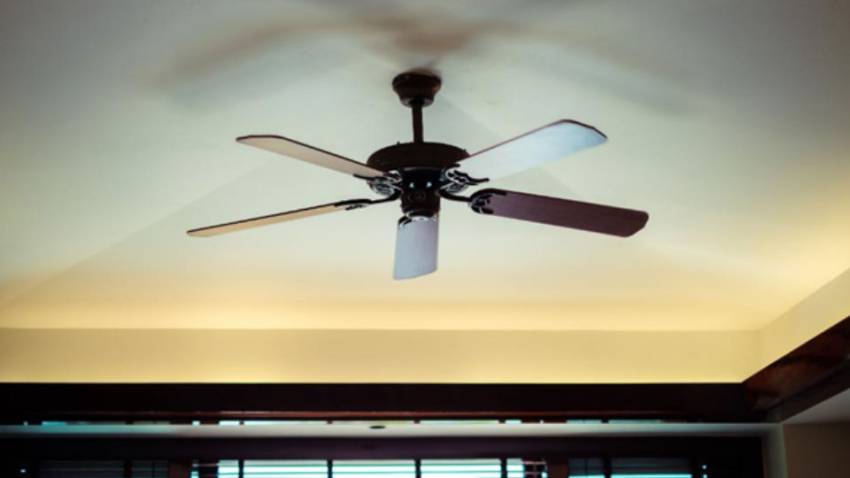Common ceiling fan problems and their solutions

New Delhi : Ceiling fans are a convenient and cost-effective way to keep your surroundings cool. They can help maintain an ideal temperature in homes in a country like India, where the temperatures range from extremely hot to extremely cold.
However, on a scorching summer day, nothing can be more irritating than entering your home only to find that your ceiling fan has unexpectedly stopped working. It is when an understanding of ceiling fan repair can be convenient.
You can directly call our customer service toll free number - 1800 103 3039 if you have any problem with your Luminous ceiling fan, and we will help you through it. Although you can always hire a professional to do the job, some of the common issues can be fixed by you pretty easily.
We have mentioned some recurring problems that you could face, along with easy solutions to fix them.
1. Noisy Ceiling Fan
It's common that a little noise comes from a ceiling fan. But there could be a problem when the sound becomes noticeable. Too much noise can be an additional indication of loose connections in the fan, fixture, or box. As the fan rotates, the loose sections of the fan clank together, which creates noise. We have listed some explanations for these problems below and the solutions to them:
• One of the causes of a noisy ceiling fan can be that the bottom canopy of the fan might be touching the top cover of the motor. To solve this issue, you can lift the bottom canopy slightly to leave a small gap between the canopy and motor.
• Another cause might be loose screws/connection/connecting wires of capacitor touching each other. To solve this, you just need to tighten all screws and connections with a screwdriver. You can also use a wire clip or rubber band to tighten the connecting wires.
• Other major cause could be Ball Bearing Erosion/RTS (Rotor Touching Sound) Issue/Shaft Cutting issue, which creates a mechanical screeching noise, that can be either periodical or regular. In these cases, the ceiling fan needs to be either repaired or replaced depending on its condition. You can contact your local electrician for the same.
• If the fan is making noise at high speed and not at low speed, then the blade screws might be loose. You will need to tighten the blade screws with a screwdriver.
2. Wobbling:
At any moment, wobbly ceiling fans look like they could fall off your ceiling. Wobbling is a common issue with ceiling fans, and there are two primary causes for this: the ceiling fan is either improperly mounted or has one or more damaged blades.
• One of the common causes of wobbly ceiling fans is a loose shackle. To solve this issue, one must tighten the screws with a screwdriver.
• When your ceiling fan is too close to one wall, air bouncing from that wall will make the fan swing from side to side. Hence, you should always try to install your ceiling fan in the middle of the room, in case that is not possible, ensure that the tip of the fan blade is at least 2-3 feet away from the wall.
• Physical deformation that might have caused to the blades while cleaning can also be one reason behind the noise. In this case, blade replacement or full fan replacement is necessary.
3. Low Air Delivery
Ceiling fans can get stuck on a one-speed setting or provide low air delivery. Here, we have mentioned a few causes for the same:
• It can happen with a high ceiling where the distance of the floor from the fan is more than 8 Ft. In this case, you can try to install at an ideal height of 8Ft by adjusting down rod length.

• More and more homes in recent times choose to opt for false ceilings for the variety of pros that come with them. But, if there is too little a gap between the fan and ceiling, it can provide low air delivery. Hence, when you go for a false ceiling, always keep in mind to leave at least a 1ft gap between the ceiling and fan.
• Smaller fans are built mainly to fit smaller rooms only, whereas bigger blade fans are suitable for larger rooms. If you think your ceiling fan is not efficient, then you might have installed the wrong sweep size of the fan. Look at the below table to understand it better:
| Sweep Size (mm) | Suitable Room Size |
| 600 mm (24") | For tiny rooms such as small shops or toilets |
| 900 mm (36") | 7* 10 Feet (2.13* 3 meters. Approx.) |
| 1050 mm (42") | 10* 10 Feet (3* 3 meters. Approx.) |
| 1200 mm (48") | 12*13 Feet (3.65* 3.96 meters. Approx.) |
| 1400 mm (56") | 14* 16 Feet (4.26 * 4.87 meters. Approx.) |
• If it’s a large room or a hall, chances are that installing a single fan might end up having low air delivery. So, use multiple ceiling fans and position them equidistantly in the room.
Look at the table underneath:
| Sweep Size (mm) | Approximate Distance from Centre |
| 900 mm (36") | 6 feet (1.82 meters) |
| 1050 mm (42") | 7 feet (2.13 meters) |
| 1200 mm (48") | 8 feet (2.43 meters) |
| 1400 mm (56") | 10 feet (3 meters) |
You must be aware of standard ceiling fan issues that can arise if you own a ceiling fan. If you need repairs for your Luminous ceiling fan, contact us today!








